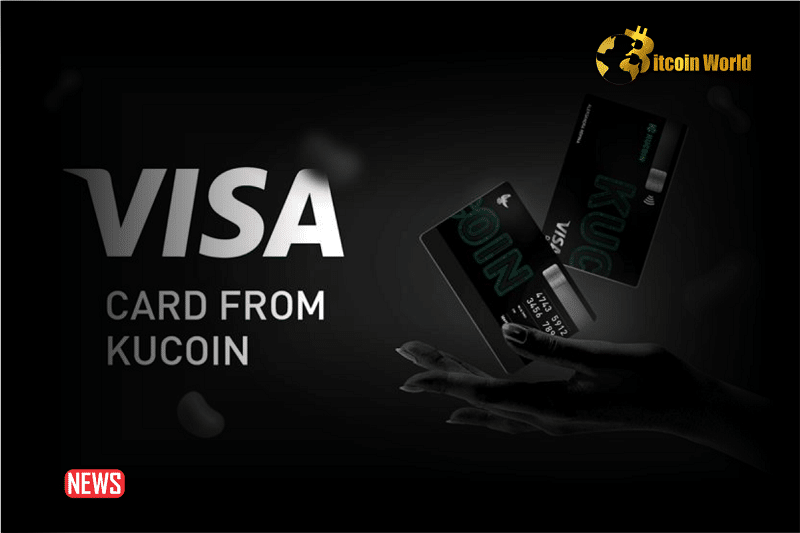- KuCoin Exchange joins forces with VISA to issue the long-awaited KuCard.
- KuCard enables seamless cryptocurrency spending anywhere VISA is accepted.
- EU customers can apply for a physical card after meeting KYC requirements.
KuCoin, one of the world’s leading crypto exchanges, is rolling out its highly anticipated KuCard program in partnership with VISA.
KuCoin announced the launch of its new physical debit card service across the European Economic Zone on November 21st, 2023.
The exchange emphasized that the new KuCard would allow crypto enthusiasts something they’ve long craved: to spend their favorite cryptocurrencies in local physical shops and restaurants and to cash out their crypto profits in a regular ATM.
At the time of writing, the KuCard only supports transactions made in Tether’s USDT stablecoin and the euro, though the site suggests that more currency options are on the way.
Ultimately, the exchange hopes to bridge the gap between digital and traditional payment methods, as crypto traders will gain the ability to spend cryptocurrencies straight from their KuCoin funding accounts.
Read Also: KuCoin Introduces Shrapnel’s SHRAP Token: New Gaming-Focused Crypto Project
KuCoin revealed that the VISA KuCard works with both Apple Pay and Google Pay, giving users versatile spending options using the KuCard.
KuCoin launched a duplex bonus campaign for the platform’s existing customers to celebrate the launch.
The announcement emphasized that all users who top up their Euro balance with SEPA methods are eligible to win up to $50 USDT when they purchase cryptocurrencies with the fiat. Secondly, users who deposit Euro and use their VISA KuCard for the first time will get an additional $2 in USDT.
🌐 Elevate your crypto journey! Top up EUR with SEPA on #KuCoin, buy crypto using your EUR balance, & win up to 50 $USDT. Celebrate the #KuCard launch—deposit EUR, pay with KuCard, & get an extra 2 $USDT bonus!
🕙10:00 on Nov 27, 2023 – 10:00 on Dec 8, 2023 (UTC)
Join now!
— KuCoin (@kucoincom) November 27, 2023
Expectations for blockchain technology are constantly growing, and as crypto has taken the spotlight for its steady growth over the past decade, the industry is looking to make its next big step.
How to Obtain a VISA KuCard
KuCoin’s anticipated VISA KuCard releases after an almost two-year-long wait, having first been announced in 2021.
For a one-time fee of €9.99, the exchange’s users can now apply for the new card by heading to KuCoin’s Funding wallet and clicking on the ‘KuCard’ tab, redirecting customers to the KYC requirements page.
To be eligible for the card, KuCoin users must have their Proof of Address (PoA) pre-approved by the KYC team and are further to bind their mobile phone number to apply.
Read Also: KuCoin Lists Creator Protocol Token Atem Network on Spot Trading
After these requirements have been met, the customer can customize the card by entering their initials or full name. Once the personalization is done, the platform’s team will review the KuCard application and the physical debit card will be issued quickly.
🌟 Dive into the future of finance with #KuCard! Join our captivating video tutorial & be among the first to experience the game-changing features.
Don't miss out on the latest updates and exclusive offers – join the recent activity and become a part of the KuCard community! 💳
— KuCoin (@kucoincom) November 22, 2023
However, it should be noted that at the present time, KuCard is not available for American residents. More so, KuCard currently supports only the stablecoin Tether (USDT), whereas, most competitors like Binance and Bybit offer payment support for cryptocurrencies like Bitcoin, Ether, Shiba Inu, XRP, and so on.
Disclaimer: The information provided is not trading advice. Bitcoinworld.co.in holds no liability for any investments made based on the information provided on this page. We strongly recommend independent research and/or consultation with a qualified professional before making any investment decisions.














